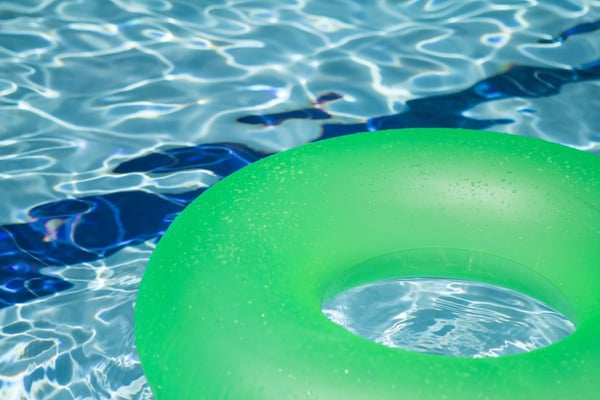If you’ve thought of incorporating a swimming pool into your investment property, whether it’s a single family home or a multi-unit residence, there is a lot to consider. We’ve all heard that pools are costly to install as well as maintain, but that doesn’t have to be the case. Plus, a swimming pool can add value to a property, and if you’re building in a hot climate, a home without a pool may be downright unappealing to buyers or renters. Below we’ll look at installation, different pool types, as well as maintenance. For the purposes of this article, we’ll only focus on in-ground swimming pools.
The three most common types of swimming pools are concrete, fiberglass, and vinyl liner.
Concrete
Concrete pools are the oldest type of swimming pool on the market. They are still a very popular choice due to the fact that they are the most versatile option in terms of size and design. Because they are made of poured concrete, the width, depth, overall size, and even shape of the pool are highly customizable. Concrete pools are also very durable and generally impervious to sharp objects and debris.
However, it is important to note that if you’re considering a saltwater pool, concrete is not the way to go as salt and concrete simply do not mix. Concrete is also very porous and can attract algae and other bacteria. Because of this, concrete pools tend to require the most maintenance as well as the most chemical use. They also have a rougher surface which some people don’t like. Finally, from a cost perspective, concrete pools are the most expensive to install, with upfront costs ranging anywhere from $50,000 - $100,000.
Fiberglass
Fiberglass pools are durable, low maintenance, and fast to install. This makes them an attractive option for both builders/investors.. Whereas a concrete pool can take months to fully install, a fiberglass pool can usually be installed in a day or two. And because of their non-porous gel coating, fiberglass pools do not attract algae and do not require as much use of harsh chemicals or as much regular maintenance as concrete pools. The durability and very low porousness of fiberglass also means saltwater systems can be easily incorporated with these pools.
Cost wise, fiberglass pools can cost anywhere from $45,000 to $85,000 - this is less than concrete pools but more than vinyl liners. However, because of their low maintenance, their overall lifespan cost is less than it is for concrete or vinyl pools - something savvy builders will recognize is a huge plus to potential buyers. According to River Pools and Spas, the 10-year pool cost projection for fiberglass pools is $3,760, compared with vinyl liner at $11,500, and concrete topping off the list at $27,400. Factors that affect this 10 year projection include money spent on chemicals, regular maintenance and cleaning, as well as refinishing, replastering, and liner replacement. The disadvantage of fiberglass pools is that the shape, depth, and size are not customizable as they are built offsite in predetermined sizes.
Vinyl Liner
Vinyl Liner pools are the least expensive option and range between $35,000 - $65,000 for initial costs and installation. However, it is important to bear in mind that the liners themselves need to be replaced every few years and that can cost around $4000 including materials and labor. Lastly, while they are the least expensive option, vinyl liners are not completely non-porous and can attract algae, making chemical additives a requirement and an added cost.

Recent Posts
- Spec Home Loans: Complete Guide to Construction Financing for Builders
- Spec Construction Loans: A Spec Line of Credit Is Worth the Paperwork
- Spec Homes and Pre-Sale Homes: Relative Benefits for a Spec Builder
- Spec Construction Success: Insights for the Investor Builder
- How Is a Spec House Different From Other Kinds of House Construction?
